| T O P I C R E V I E W |
| Xavier |
Posted - 16/09/2012 : 17:49:36
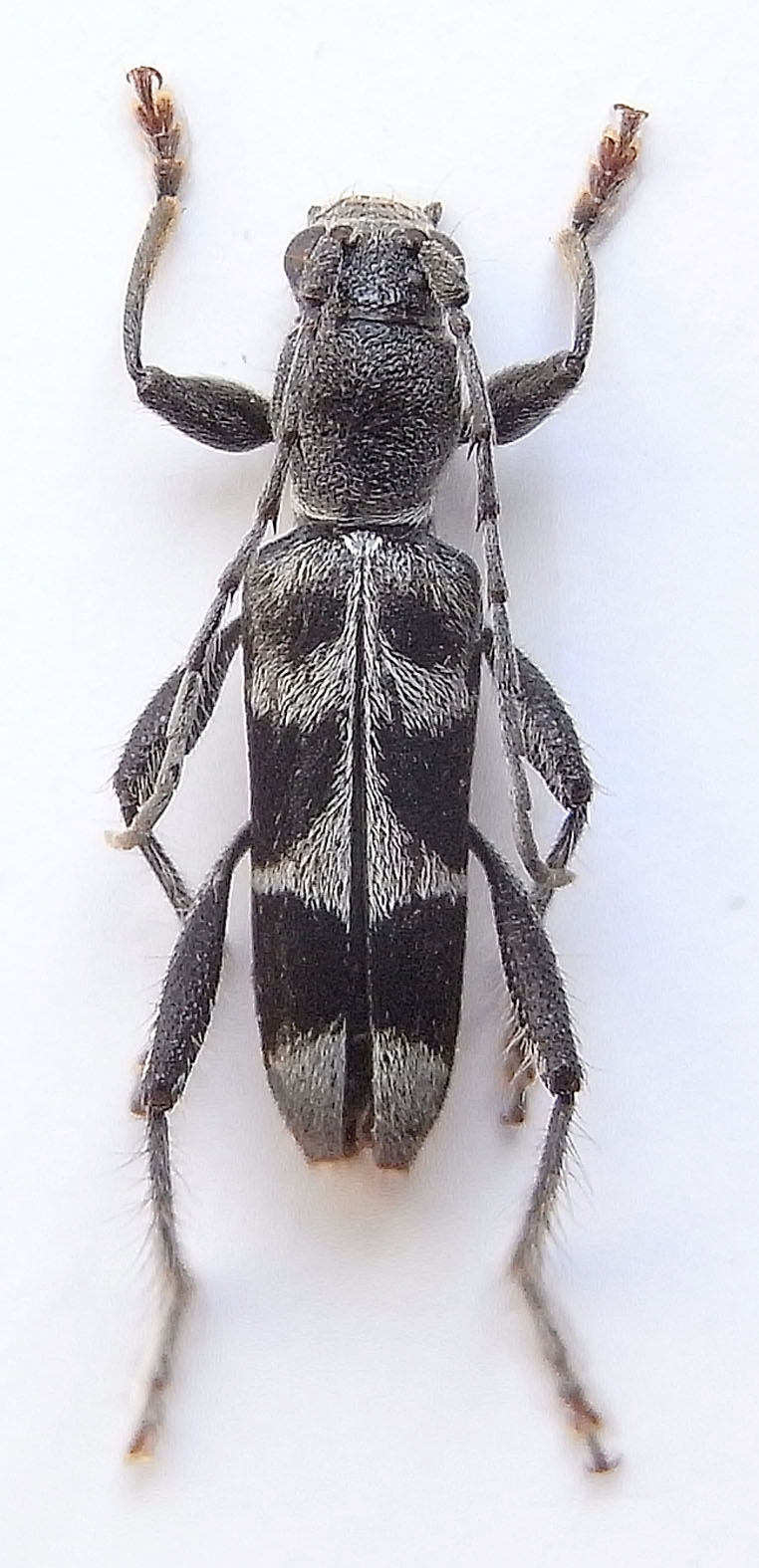
8 mm, Sabah, Borneo.
Un Demonax peut-être, à cause des épines aux antennes ?
Aucune piste pour cette espèce... |
| 15 L A T E S T R E P L I E S (Newest First) |
| Xavier |
Posted - 06/03/2015 : 19:40:11
All is said
- My (only one) specimen is hairy.
- I am unable to find a clear difference by reading Dauber's description
- Dauber species is variable
-> I don't describe this taxa |
| dryobius |
Posted - 06/03/2015 : 19:29:43
I have just one specimen of O. albofasciatus, determined by Holzschuh, and I know that Holzschuh has this species, too. My specimen is too small for my camera to post a photo.
Are you able to find any true differences besides the patterns of the elytra? I recommend that closely related species to not be described based on only specimen. I see that your specimen is more hairy... Sometimes the hair on a specimen in disturbed, rubbed off, or matted on the body due to water or chemicals. Yes, it is a "risky" paper. Are there not easier species to describe? |
| Xavier |
Posted - 06/03/2015 : 17:10:40
Que veux-tu dire Francesco ? |
| Francesco |
Posted - 06/03/2015 : 09:45:11
Là... je pense même que l'holotype soit périmé... |
| Xavier |
Posted - 05/03/2015 : 19:16:33
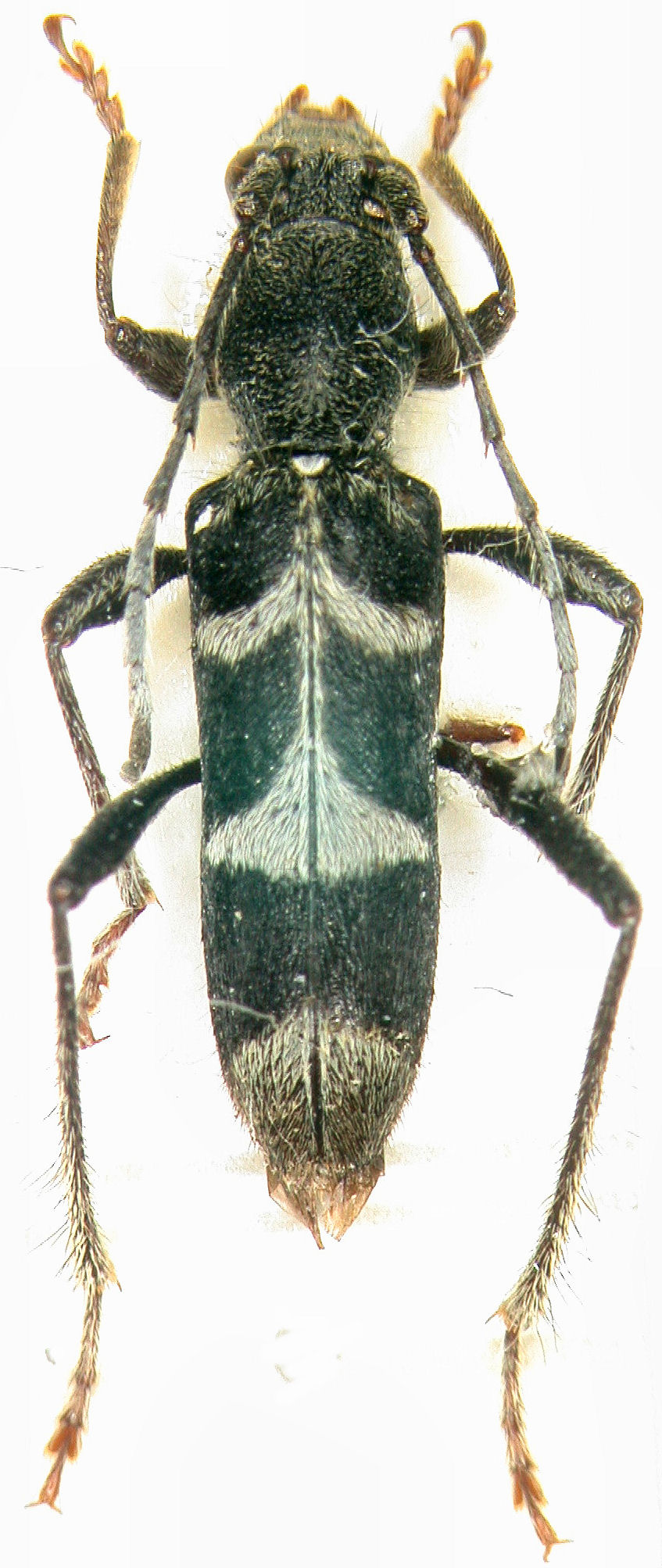 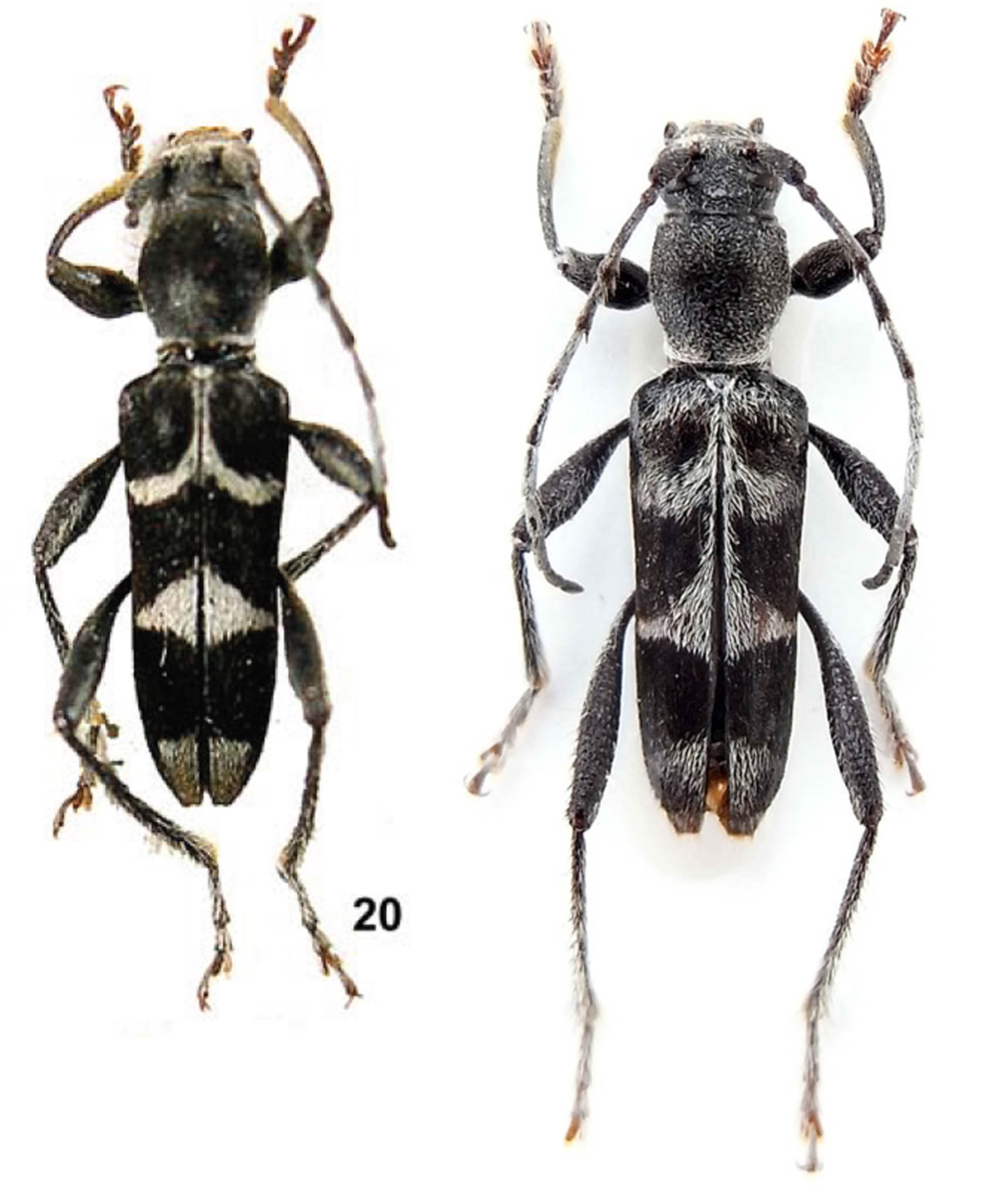
1. paratypus Oligoenoplus albofasciatus Dauber, 2006
2. Holotypus Oligoenoplus albofasciatus Dauber, 2006
3. Oligoenoplus sp. Borneo, Sabah
Mr. Dauber sent me his picture of a paratypus with 2nd and 3rd bands united, thanks a lot to him.
My specimen is none of the described Oligoenoplus ... and I need advice  : Description is ready, but it is a risky paper : Description is ready, but it is a risky paper  ... ... |
| Xavier |
Posted - 20/02/2015 : 11:46:03
oui, mais si c'est seulement une histoire de pubescence, on peut penser que les paratypes avec "la bande 3 rejoignant la bande 2" ont aussi une pubescence plus dense aux antennes, à la base, etc.
L'apex du pronotum me semble assez semblable; sur mon specimen, je juge qu'il est d'égale largeur que la base, mais bon,...
|
| Francesco |
Posted - 20/02/2015 : 11:11:55
Derniers 5 antennomères uniformément pubescents (6 dans le tiens), forme du pronotum à l'apex, bande 1 + 2 non unies à l’extérieur... |
| Xavier |
Posted - 20/02/2015 : 10:51:32

Well, a last picture to compare with type specimen of Oligoenoplus albofasciatus Dauber, 2006.
My specimen is hairiest, but after that ??
No way without seeing paratypus specimens with joined bands... |
| Xavier |
Posted - 20/02/2015 : 10:17:43
About Oligoenoplus albofasciatus, Dauber (2006) says that on 2 paratypus 3rd band joint the 2nd by the suture.
I'm anable to find any difference with my specimen : same punctuation, hairs, etc.
So, for me, it is just Oligoenoplus albofasciatus Dauber, 2006
I add another picture (same specimen):
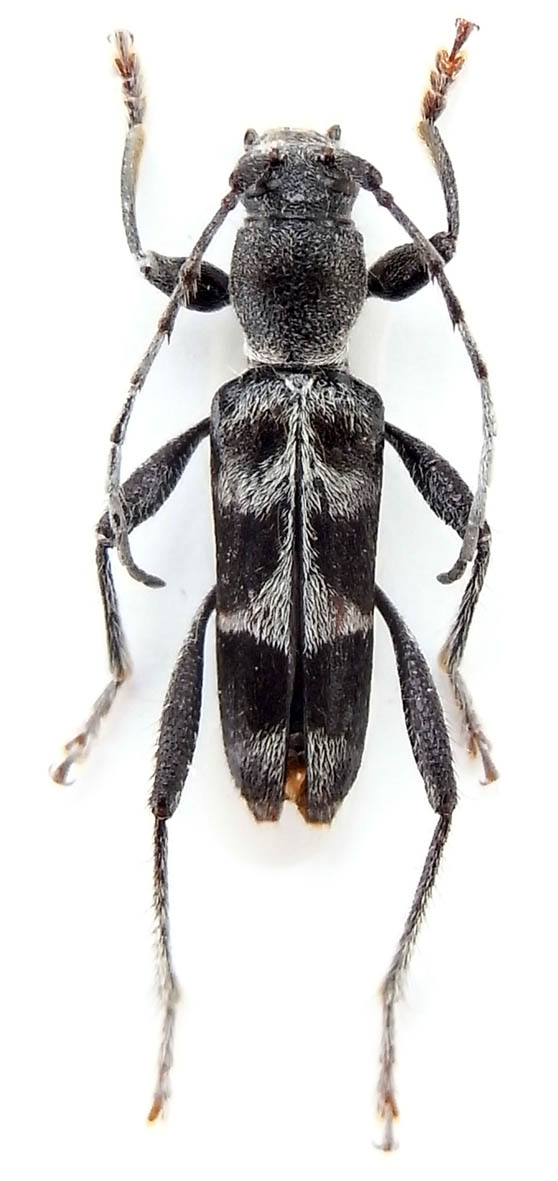 |
| Xavier |
Posted - 26/09/2012 : 09:54:46
After reading Dauber's description, I stay to Oligoenoplus sp.
Thanks to Pierre  |
| Xavier |
Posted - 19/09/2012 : 16:18:34
Thanks.
I see for a translation of Dauber's description with Pierre. |
| Petr Viktora |
Posted - 19/09/2012 : 15:27:20
At first sight this beetle is Oligoenoplus. |
| Xavier |
Posted - 18/09/2012 : 21:58:46
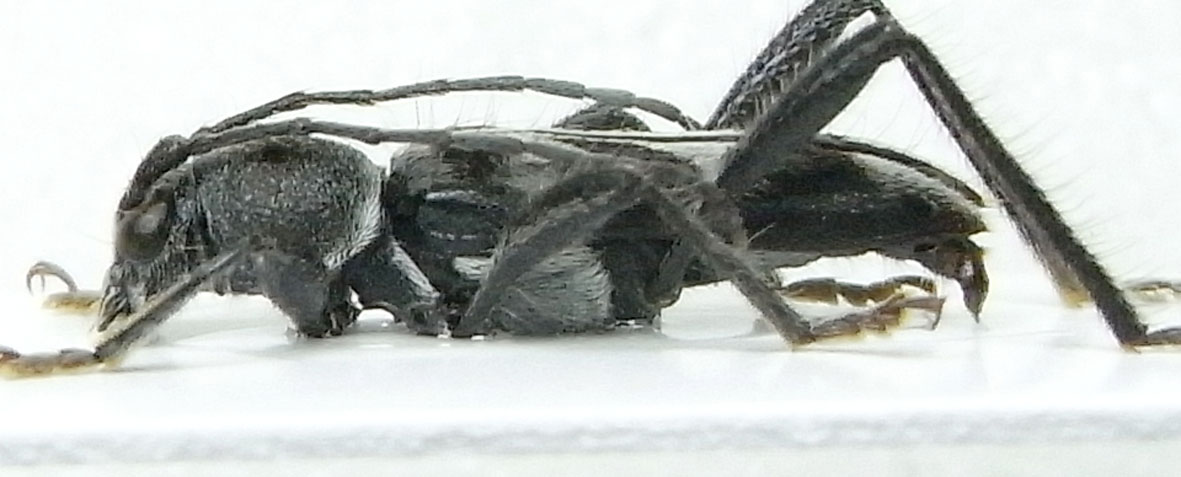
Pas assez de lumière pour faire une bonne photo, et j'ai déjà recollé ma bête 
Est-ce que cette image te suffit ? Autrement, j'en ferai une meilleure demain. |
| Francesco |
Posted - 18/09/2012 : 21:43:55
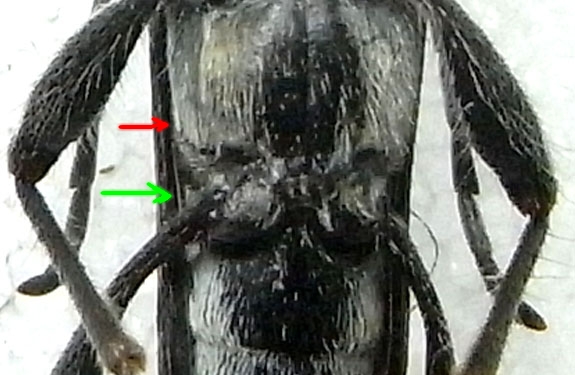
mmmhm: je ne suis pas sûr. L'epimère est la ligne claire indiqué par la flèche rouge.
Est-il aussi celui-ci indiqué par la flèche verte ou s'agit-il des ailes? |
| Xavier |
Posted - 18/09/2012 : 21:04:02
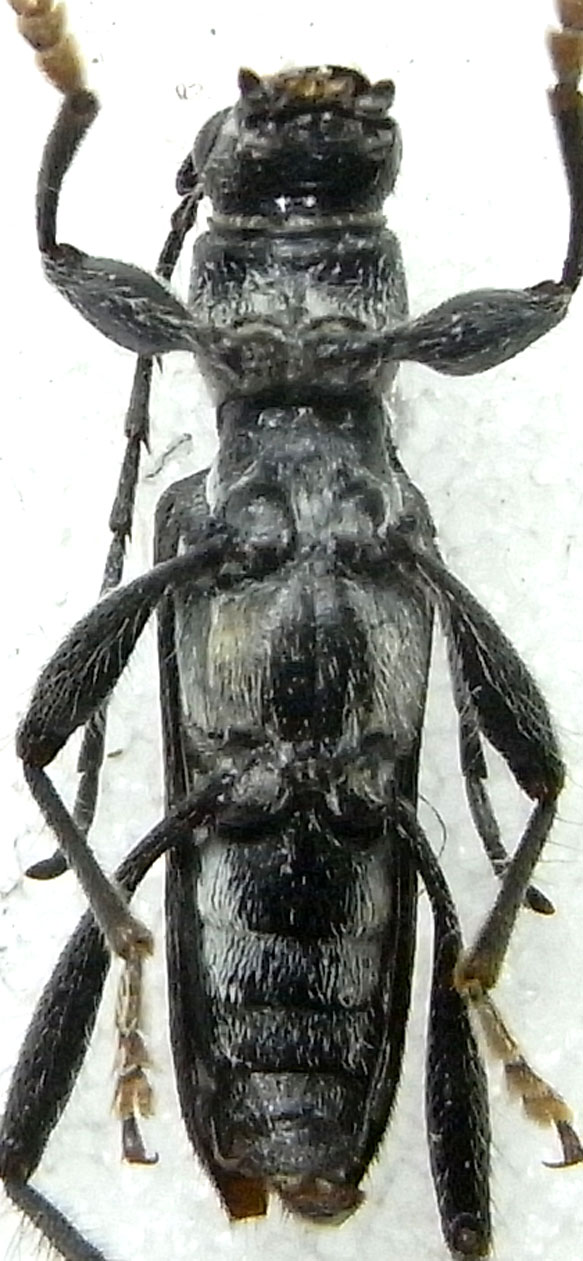
Plutôt qu'un long discours...
Est-ce que cette image est suffisante pour être sûr du genre ? |


